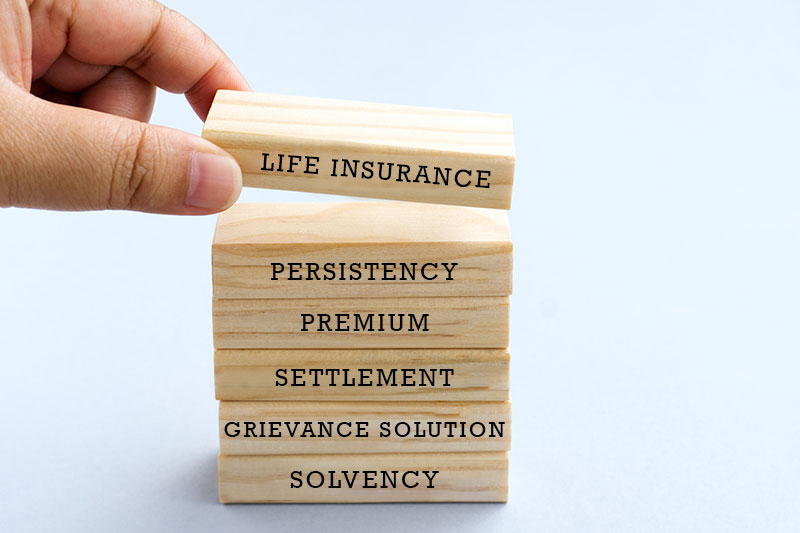3MinsJune 17, 2020
A life insurance policy is meant to provide for your family in your absence. Since it serves a long-term need, it is critical to evaluate the features and benefits of the policy thoroughly before buying it. While your personal requirements such
as income, age, family size, liabilities and so on are essential, there are also certain metrics that you could consider before selecting a policy.

All the numbers/insights (other than premium rates), are published by the IRDAI regularly. You can also find them on individual insurance companies’ websites. Do compare before buying the policy.
Here are five criteria basis which you should choose your life insurance provider.
1. Persistency Ratio: This number reflects the number of people who renew their policies with the insurance company every year. It reflects the company’s retention capability and trustworthiness. The higher the persistency
ratio, the more the customers trust the brand. When looking at Persistency Ratio, look for two numbers -- people who have renewed their policy after one year and after five years. Ideally, both should be high.
2. Premium Rates: Today, you can compare rates for term plans on various life insurance-related websites. While a lower premium rate is always welcome, since you would be paying it for a long time, let that not be the sole criteria.
The company offering the lowest premium may have a lot of exclusions. So, do some due diligence. Ideally, you should choose a company whose rate is around the industry average. Also, check the amount of commission that you pay for your insurance — the lower the commission, the lower the premium. Use Axis Bank's life insurance calculator to know your premiums.
3. Claims Settlement Ratio (CSR): This indicates the percentage of claims settled by the company. The CSR is one of the most important numbers that you should look at before you buy insurance. The higher the CSR, the higher the
number of claims settled. According to experts, in the life insurance business, any CSR less than 95% should be a red flag. Again, do not look at just the current year’s figures. Look at data for the last five years at least.
[Also Read: Know about disease-specific health insurance plans]
4. Percentage of grievances solved: This is thenumber of grievances solved as against the number of complaints received by the insurance company. The higher the percentage of grievances solved, the better it is. You can also check
the number of pending claims at the end of each year. It shows how responsive the company is towards customer complaints. Hence, it is an important metric, especially since life insurance is a long-term product.
5. Company Size and Solvency Ratio: A life insurance contract is a long-term commitment. Therefore you want to be sure that the company you buy the cover from will be around, say,
25-30 years down the line when a claim on your policy is likely to be made. There are two ways to check this. First is the size of a company, in terms of its total assets, profitability, market share and growth. The second is the Solvency
Ratio. This is an assessment of an insurance company’s financial capabilities. IRDAI (Insurance Regulatory and Development Authority of India) norms dictate that each company should maintain a solvency ratio of 150% to minimise risk
and avoid bankruptcy. The higher the solvency ratio, the greater the chances of your insurance claims being honoured. When you look at a company's solvency ratio, don't just go by the current number. Check out for at least the last five years.
Disclaimer: This article has been authored by The Source, a Mumbai-based content creation and curation firm. Axis Bank does not influence the views of the author in any way. Axis Bank and The Source shall not be responsible for any direct/indirect loss or liability incurred by the reader for taking any financial decisions based on the contents and information. Please consult your financial advisor before making any financial decision.












